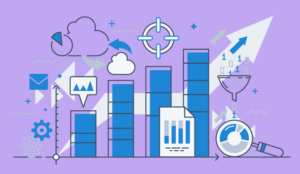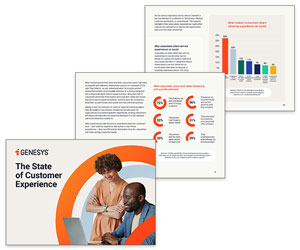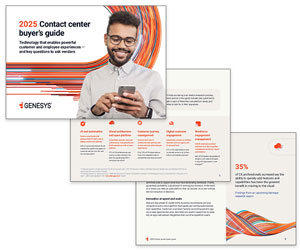Ricardo Solano at Genesys explores how businesses leverage data analytics and experience orchestration to enhance customer experiences through AI-driven insights and personalized interactions.
Data analytics and experience orchestration are two distinct but related concepts that are increasingly important as businesses build modern AI-powered capabilities.
They complement each other as part of a comprehensive strategy to achieve business outcomes through better customer experiences.
Data analytics and insights power the actions to orchestrate the customer experience. Artificial intelligence (AI) is the “muscle” that helps process large volumes of this data and provides automation mechanisms for experience orchestration, such as AI-powered routing and bots.
By combining data analytics with experience orchestration, businesses can better understand their customers.
They can anticipate their needs in real time and deliver exceptional experiences that drive business growth and success. And they’re able to act when it’s most impactful and appropriate.
This blog post examines how data analytics provides actionable insights that drive value when integrated as part of an experience orchestration strategy. And we’ll look at why they’re at the core of improving the overall customer experience (CX) and achieving business outcomes.
The Role of Data in Experience Orchestration
Data as the Backbone of Customer Experience
You can’t win at experience orchestration without customer experience analytics. These details are used to surface valuable insights from all kinds of data sources, including customer interactions, transactions, social media and more.
These insights are critical in giving customers a better experience, optimising processes and workflows, and improving products and services. Businesses that take this approach to customer service gain a competitive advantage in the marketplace.
Data analytics uses advanced technologies like machine learning and data mining. These enable businesses to collect and analyse data across all relevant customer touchpoints and digital channels to understand their actions, preferences and intent.
By surfacing insights of customer behavior in the moment of engagement, you can uncover patterns and predict future behaviors. These can be used to inform decision-making and drive predefined business outcomes.
It also enables the personalisation that customers expect.
Understanding Experience Orchestration
Experience orchestration is an end-to-end approach to personalisation that reflects a customer’s complete experience with a business.
By combining real-time customer journey analytics and insights with past behaviors, it uses AI to deliver better experiences.
For example, you can gain visibility into your customer’s journey and see where they’re having issues, such as trying to find a specific product, looking for support or simply paying a bill. With these insights you can resolve any issues and help customers achieve their goals.
Modern customer journey mapping technology and analytics tools give you necessary insights so each interaction becomes a moment of truth within the entire customer experience. Every interaction is based on each customer’s objectives and preferences, so it’s highly personalised.
This is a more strategic perspective on both the customer experience and employee experience because it streamlines journeys while improving overall business outcomes.
By analysing large amounts of data during this process, AI algorithms identify patterns and intents that humans might overlook or can’t respond to quickly.
This real-time capability enables businesses to provide value that truly addresses customer needs in the moment.
Data Analytics Enhances the Customer Experience
Using CX analytics enables you to act immediately if an interaction is faltering, as well as plan and update long-term strategies. You can then optimise processes to achieve those goals.
Here are several areas where customer journey analytics data shines:
Personalisation
Gathering and analysing customer experience data leads to better understanding of customer preferences, behaviors and needs. With this information, companies can create personalised experiences tailored to individual customers, enhancing satisfaction and engagement — and reducing customer churn.
Segmentation
Use analytics to segment your customer base into distinct groups based on demographics, behaviors or preferences. This enables you to develop more targeted marketing efforts. And you can tailor products, services and communications to specific customer segments to improve experiences with relevant content.
Predictive Analytics and Insights
Data analytics can uncover patterns and trends in behavior, enabling you to make informed predictions about future customer actions. You can also proactively address issues, offer relevant recommendations and provide a smoother customer experience.
Feedback Analysis
By analysing customer feedback, such as reviews, surveys and social media interactions, you have visibility into customer sentiment, satisfaction levels and pain points. Use this feedback to identify areas for improvement, address customer concerns promptly and enhance overall experiences.
Sentiment Analysis
Identifying your customers’ emotional tone through text and speech analytics is an important component of Voice of the Customer input. This process uses AI natural language processing to understand how a customer feels throughout their interaction.
Real-time Decision-making
Accessing and analysing customer data in real time creates agility. And it allows you to respond rapidly to changing customer needs and market dynamics.
Optimisation
By continuously analysing customer data, you can spot bottlenecks, inefficiencies and areas of friction in the customer journey. From this, you can optimise your processes and remove obstacles — streamlining interactions.
Competitive Advantage
Delivering experiences that meet or exceed customer expectations lets your brand stand out from competitors. This means you’ll attract and retain loyal customers. One way is through social monitoring of conversations and trends around your brand and your industry.
Data Analytics Goes Beyond Customers
Connecting customers with the right call centre agent is crucial to delivering a great user experience. But it’s only one part of what’s required.
Positive engagements are no longer only about quick customer resolutions for one-off interactions. It’s about orchestrating the entirety of these experiences.
How Data Analytics Empowers Employees
When a customer reaches out to a brand on any channel, a customer experience platform routes the request to an automated system, a self-service bot or a live agent.
However, what’s missing is the ability to empower agents, or the system, with the full context of that customer’s journey.
This could be from the brand’s own system, such as a previous purchase or return, or externally, such as an online search or response to an ad.
The lack of context provided to resolve individual experiences is often what contributes to a negative customer experience and ongoing frustration for agents.
To provide excellent service, your customer support teams need access to the most recent customer information during every interaction.
CX data from different systems includes personal and historical context about customers. When it’s integrated across all customer interactions, those interactions become relevant, personal and proactive. With the right data and knowledge you can orchestrate every engagement as part of an integrated strategy.
When data is instantly and automatically available to any authorised user — including all business systems and processes — you can visualise and monitor it.
Having this contextual customer journey data on the agent desktop gives them valuable insight. It’s also an analytics source for agents.
With this context, agents can instantly see and understand what the customer is trying to accomplish. This speed and efficiency not only makes customers happy, it enhances employee engagement and improves job satisfaction.
Case Study: Data-Driven Experience Orchestration
Here are a few experience orchestration use cases in different industries.
- Retailers send proactive notifications about offers — anywhere in their purchase cycle. For example, if the inventory has changed in the middle of a transaction, pop-ups notify the customer about low stock to expedite their order process. They can also send a different type of notice on a preferred contact channel if they have an abandoned shopping cart.
- Healthcare providers send automatic reminders for upcoming appointments, to schedule a follow-up visit, or when prescription refills are due. With data-driven orchestration, they can match new prescriptions with existing medications in the same profile and proactively alert patients to adverse reactions.
- Financial services organisations consolidate client information across different financial product portfolios, or offer services based on account status. Experience orchestration also enables service coordination across multiple lines of businesses, such as banking, credit cards and loans. Analytics that report on spending behavior can offer proactive fraud alerts and expedited service to replace cards.
Stay Ahead with Data-Driven Experience Orchestration
There’s a growing and widespread convergence of advanced technologies as businesses focus on a more customer-centric approach to service. Done right, data-driven insight combined with AI helps businesses collect customer data to achieve unprecedented business benefits in terms of efficiency, customer loyalty and growth.
Businesses that can use the power of data to create compelling and differentiated experiences will be well-positioned to thrive in an increasingly competitive marketplace.
Empower Your Business With Data Analytics
Analytics are integral to a successful experience orchestration strategy. When your data sources are integrated on a single platform, the analytics do more than deliver deep insights to you about your customers.
They empower every part of an organisation — from data experts to analysts to agents and business users — to align and optimise each customer’s experience and improve business outcomes. Ultimately, you’ll build stronger relationships with customers and maximise customer lifetime value.
As the volume of available business data continues to increase, consider the ways you can use it to optimise your customers’ experience.
This blog post has been re-published by kind permission of Genesys – View the Original Article
For more information about Genesys - visit the Genesys Website
Call Centre Helper is not responsible for the content of these guest blog posts. The opinions expressed in this article are those of the author, and do not necessarily reflect those of Call Centre Helper.
Author: Genesys
Published On: 28th Jun 2024 - Last modified: 22nd Oct 2024
Read more about - Guest Blogs, Genesys






 Genesys empowers more than 8,000 organisations in over 100 countries to improve loyalty and business outcomes by creating the best experiences for their customers and employees. Through Genesys Cloud, the AI-Powered Experience Orchestration platform, Genesys delivers the future of CX to organisations of all sizes so they can provide empathetic, personalised experience at scale. As the trusted platform that is born in the cloud, Genesys Cloud helps organisations accelerate growth by enabling them to differentiate with the right customer experience at the right time, while driving stronger workforce engagement, efficiency and operational improvements.
Genesys empowers more than 8,000 organisations in over 100 countries to improve loyalty and business outcomes by creating the best experiences for their customers and employees. Through Genesys Cloud, the AI-Powered Experience Orchestration platform, Genesys delivers the future of CX to organisations of all sizes so they can provide empathetic, personalised experience at scale. As the trusted platform that is born in the cloud, Genesys Cloud helps organisations accelerate growth by enabling them to differentiate with the right customer experience at the right time, while driving stronger workforce engagement, efficiency and operational improvements. 






























